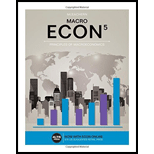Explain how those objectives are different.
First stand is more short term, depending on the current harvest level, while soil is more long term.
Do those two objectives generate the same or different rotations, even using the same discount
rate? Why?
No, since we only consider the value of land in soil, while for first stand we are more short term focused,
What is meant by “salvage value”?
It is the value of land after harvest.
How does using a lower interest rate affect the optimal rotation under the objective of maximizing soil expected value?
We will have a longer time period of rotation.
How does timber harvesting under the criterion of maximizing the soil expected value relate to the steady-state analysis we saw in the management of a fishery?
Here, we are trying to steady state harvest from the soil. Under that objective of maximizing the soil expected value, the rule for optimally harvesting trees can be expressed as an annual rule for harvesting or not harvesting that year. What is that
annual rule?
Marginal benefit next year from waiting and not harvesting this year should equal the marginal cost next year of waiting and not harvesting this year
What is meant by non-consumptive as opposed to consumptive uses of a forest? What are some examples of non-consumptive uses?
A consumptive use is where the resource gets used up, such as timber, and for non-
consumptive it is not used up, such as recreational.
When you add the objective of managing a forest for non-consumptive uses such as recreation and habitat as well as for timber supply, does that change the optimal rotation? How?
2











